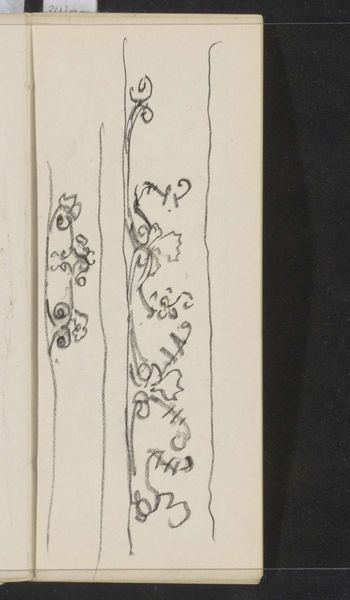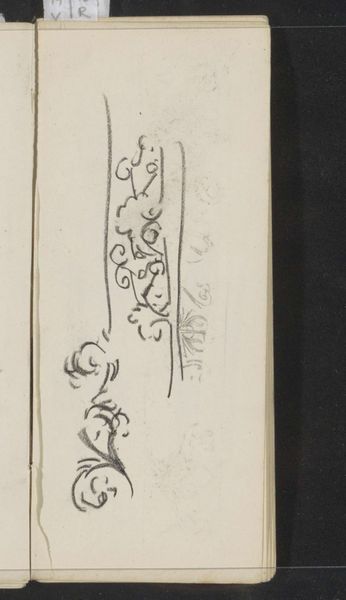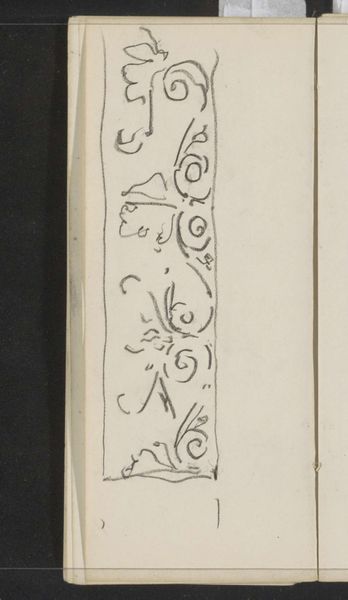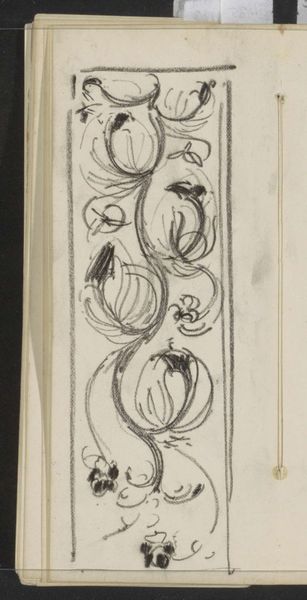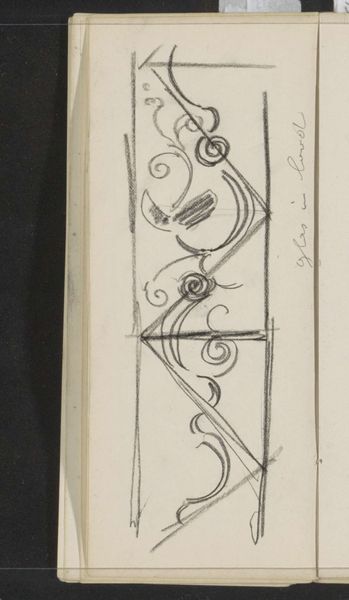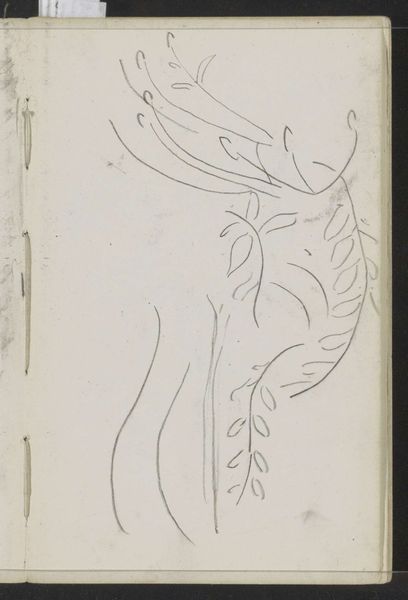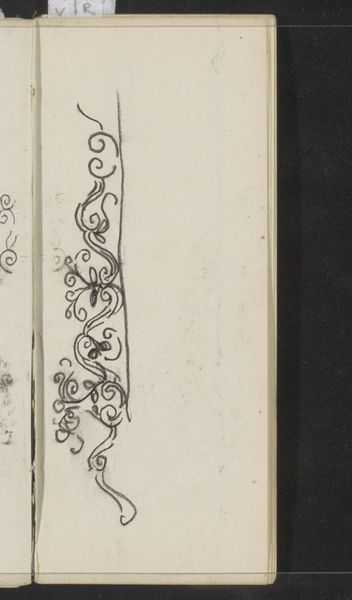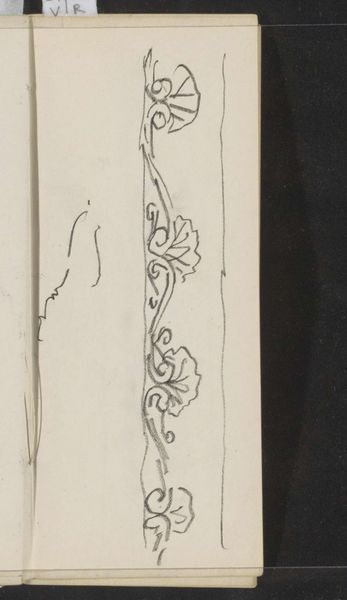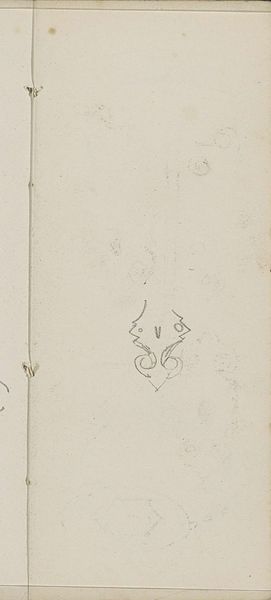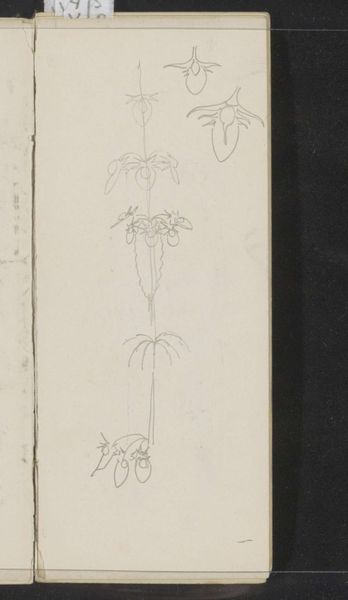
drawing, paper, ink
#
drawing
#
art-nouveau
#
pen sketch
#
sketch book
#
hand drawn type
#
paper
#
personal sketchbook
#
ink
#
idea generation sketch
#
sketchwork
#
geometric
#
pen-ink sketch
#
line
#
pen work
#
sketchbook drawing
#
decorative-art
#
sketchbook art
Copyright: Rijks Museum: Open Domain
Curator: Today we’re looking at Gerrit Willem Dijsselhof’s “Band met een floraal motief,” or “Band with a floral motif,” created around 1901. It resides here at the Rijksmuseum. Editor: It’s a rather stark composition. Mostly pale paper punctuated by dark, almost gothic-looking ink sketches. It gives the impression of a rough, possibly preliminary drawing, an immediate seizing of an idea. Curator: Exactly! The linear quality definitely places it within the Art Nouveau movement, where decorative arts took center stage. Look how Dijsselhof reduces natural forms to almost abstract symbols. Editor: Symbols crafted with readily available materials—ink and paper. The artist, in that act, elevates what might be considered mere craft into high art. I wonder what his workspace was like? Was this a spontaneous sketch in a café or something conceived in a well-equipped studio? Curator: Knowing the period, this symbolic language reflects a yearning for spiritual connection, a break from industrial drudgery into an idealized past. The floral motifs evoke purity and natural harmony, which were so valued at the time. Editor: Harmony achieved with fairly simple tools. Consider how access to these kinds of tools might have shaped artistic movements. The spread of affordable paper and inks allowed for an explosion of artistic experimentation outside traditional academic settings. How egalitarian! Curator: It speaks volumes about a culture wrestling with rapid change, looking back for inspiration but using those traditional forms to envision the future. This little floral band represents so much. Editor: Right, from the perspective of someone interested in labor practices, you have to consider that paper production involved its own environmental and social consequences. It challenges any easy notions about "natural harmony.” It would be interesting to know more about paper mills in the early 20th Century Netherlands, and the workers behind this artwork material. Curator: I suppose even simple drawings, and maybe especially drawings that yearn for some former harmony, can hold immense complexity. Editor: Precisely, it urges us to explore art's complex interplay with material culture and socio-economic conditions.
Comments
No comments
Be the first to comment and join the conversation on the ultimate creative platform.
